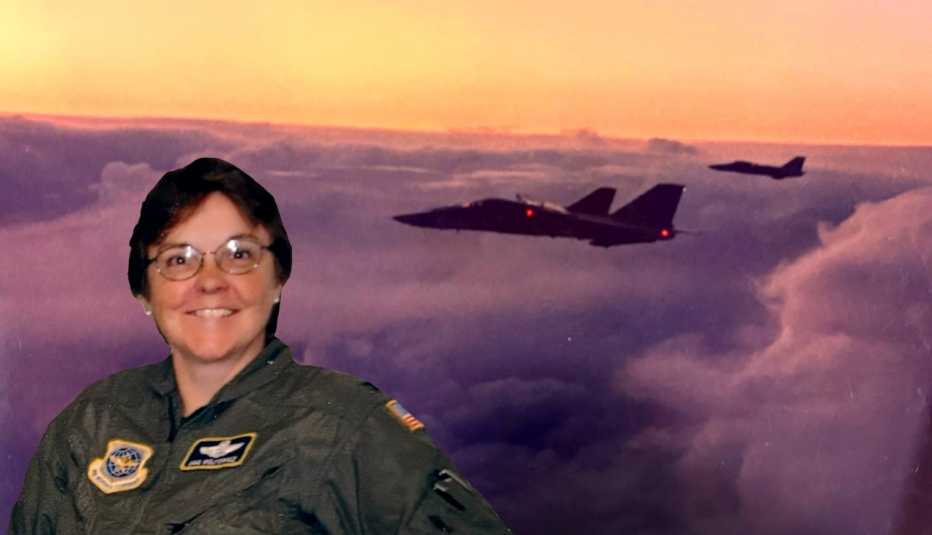Staying Fit


Gail Wojtowicz didn’t intend to make history when she joined the Air Force in 1980. But in April 1986, she and six other female aviators refueled fighter aircraft during a raid on Libya.
The women didn’t engage the enemy in combat — a 1948 law prohibited that — but their proximity to the combat zone raised eyebrows. By 1986, women had flown as military aviators for more than a decade, but each commander interpreted the law’s vague wording differently; some allowed women to fly combat-related missions and some did not.


AARP Membership— $12 for your first year when you sign up for Automatic Renewal
Get instant access to members-only products and hundreds of discounts, a free second membership, and a subscription to AARP the Magazine.
For the Libya raid, Wojtowicz’s commander sided with the women.
With three older brothers serving as Air Force enlisted members and an uncle who retired as a lieutenant colonel, Wojtowicz — known as Wojo — “always saw blue suits growing up and thought it was pretty cool.” The Michigan native also liked the idea of a team with everyone “all wearing the same uniform and fighting for each other.”


You can subscribe here to AARP Experience Counts, a free e-newsletter published twice a month. If you have feedback or a story idea then please contact us here.
But in the late 1970s, women weren’t yet joining the military in large numbers. Instead, after graduating from Ferris State College with a degree in advertising, she earned a master’s and pondered getting a Ph.D. But then conversations with a Vietnam veteran in one of her classes convinced her she was missing out on something.
An Air Force recruiter quickly scooped her up, but she broke her leg while skydiving, which delayed her entry to Officer Training School. After commissioning in 1981, she headed to navigator training.
Graduating second in her navigator class, she had her choice of aircraft as long as it wasn’t a fighter or a bomber, since a law at the time forbade women from flying combat aircraft.
Wojtowicz chose the KC-135Q tanker, which refueled the SR-71 reconnaissance aircraft.
Arriving at Royal Air Force base Mildenhall in the U.K., Wojtowicz didn’t even unpack her bags before she was assigned to a team planning tanker support to a highly classified mission: a raid to bomb targets in Tripoli in response to Libya-sponsored terrorist attacks in Europe.
The mission called for U.S. Air Force F-111F fighter-bombers and EF-111A electronic attack aircraft based in the U.K. to join forces with carrier-based U.S. Navy aircraft. The Air Force planes required aerial refueling support to make the seven-hour round-trip flight.
After two weeks of planning, Wojtowicz and her team learned the date of the raid — April 14, two days later. But the next day, they were told that U.S. aircraft would not be permitted to fly over France. The new flight path to the west over the Atlantic Ocean doubled the mission length to 13 hours and tripled the number of tankers to 28.

































































More From AARP
These Veterans Are on a Mission to Make You Laugh
Why they swapped the battlefield for stand-upWWII Hero Returned to American Soil from Germany After 79 Years
Carl Nesbitt saved the lives of six of his B-17 crew. Now he rests in peace
Secrets of a Happy Life at 101 from a Women's Army Corps Veteran
Six lessons gleaned from a century of selflessness and serviceRecommended for You